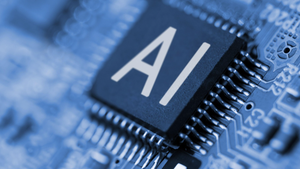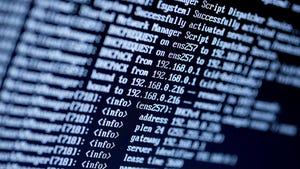Subsea Cable Market Expands as AI, Geopolitics Reshape Global NetworksSubsea Cable Market Expands as AI, Geopolitics Reshape Global Networks
Hyperscalers are driving accelerated investment in subsea cable infrastructure as global unrest highlights the need for route diversity.

Investment in subsea cable infrastructure is projected to remain high through at least 2029, driven by mounting global demand for digital services and rising concerns over national resilience.
According to a 2024 Analysys Mason report on the submarine cable market, spending on new systems and the operation of existing fiber-optic cables is expected to grow from $7.96 billion in 2023 to $9.80 billion by 2029.
While hyperscalers such as Amazon, Meta, and Google continue building new transcontinental routes to support data centers and AI workloads, a growing number of governments are investing in route diversity as a critical component of national infrastructure protection.
“Various factors are driving investment in submarine cables, but the need for route diversity has become a critical part of national resilience strategies,” the report said.
That urgency is underscored by recent subsea cable incidents in the Baltic Sea and Red Sea, which have highlighted the geopolitical fragility of global digital infrastructure.
With more than 95% of intercontinental data traffic now traveling through undersea cables—including $10 trillion in daily financial transactions—enterprises, governments, and cloud providers are ramping up efforts to expand capacity, increase resiliency, and reduce risk across the world’s digital backbone.
AI, Hyperscaler Demands Fuel Expansion
Demand for subsea capacity is growing fast, as hyperscalers and cloud service providers make substantial investments in the market.
“We also anticipate that emerging markets will follow suit, with some already announced, such as Vietnam, and others in the planning phase as they assess their positions within the emerging data center ecosystem,” said Michael Misrahi, EY Americas telecommunications strategy and transformation leader.
He explains nearly all intercontinental traffic now travels through subsea cable infrastructure.
“There’s an increasing shift towards streaming and cloud-related traffic as well as emergence with AI,” he says.
Misrahi adds that data-intensive AI training is expected to create new infrastructure markets in the Middle East and Asia, intensifying the need for global connectivity.
“We are already witnessing the need for new routes, reduced latency, and connectivity to emerging AI hubs through new tech company investments,” he says.
At the same time, large-scale investment from hyperscalers is changing the financing model.
“Hyperscaler involvement in subsea cable systems is reshaping global investments,” says Airtel Business CEO Sharat Sinha. Cloud companies are now co-investing to ensure dedicated, high-capacity routes to support growing cloud workloads, AI applications, and content delivery services, Sinha says.
Security Threats Growing
However, the same cables powering economic growth are also increasingly exposed.
“The safety and security concerns, especially considering recent reports of sabotage and damage, are significant,” Misrahi says.
He points to the Baltic Sea and Taiwan incidents, where anchoring events and deliberate sabotage raised alarms across the telecom sector.
“We are entering an uncertain global political landscape, and whether it’s subsea or non-terrestrial digital infrastructure, there are concerns about interference with these critical components of our digital networks in geographical areas that are harder to police,” Misrahi cautions.
Roger Grimes, a cybersecurity expert at KnowBe4, explains subsea infrastructure is now a geopolitical target.
“Different countries are either intentionally or accidentally sabotaging subsea cables,” he says. “The bigger threat seems to have been actually destroying the cables, accidentally or intentionally.”
Beyond physical attacks, Grimes says cable landing stations and routers are increasingly susceptible to cyber intrusion.
“They use network equipment just like anyone else,” he says, which makes them vulnerable to unpatched software and firmware vulnerabilities, social engineering, or brute-force credential attacks.
The situation could become more precarious as quantum computing matures.
“Once you get sufficiently capable quantum computers, that’s going to be an even bigger concern,” Grimes says.
While quantum-resistant encryption and secure transmission protocols are in development, they are still limited by technical constraints.
Building in Redundancy
To address these concerns, redundancy and diverse routing are key strategies.
“To prevent single points of failure, organizations must rely on multiple cable routes across different geographies,” Sinha says.
Airtel’s strategy includes maintaining at least three cables per major path and building hybrid networks that integrate subsea, terrestrial fiber, and cloud infrastructure.
Misrahi notes that resiliency is now a top design requirement.
“We have heightened our expectations around redundancy and resiliency, which emphasizes the need for subsea infrastructure that provides those qualities to a global network,” he says.
From a policy standpoint, Grimes points to the need for more repair ships and regulatory streamlining.
“There’s only 22 repair ships worldwide, and only two of them are US-flag,” he says. “That’s kind of wild considering the critical nature of these cables.”
Grimes notes that agencies like DHS and CISA are trying to reduce permitting time and boost response capabilities.
Innovation in Cable Design, Monitoring
Technological innovation is also helping future-proof subsea infrastructure.
According to Misrahi, AI-powered preventive maintenance and distributed acoustic sensing can monitor signal disruptions and detect potential damage in real time.
Sinha highlights new cable architecture like spatial division multiplexing, which increases fiber pair density and improves cost-efficiency.
“It allows more fiber pairs per cable, significantly boosting overall capacity while making each system more cost-efficient,” he says.
Another emerging trend is convergence between energy and telecom infrastructure, with Misrahi citing recent developments in dual-purpose undersea cables that carry both electricity and data.
“Shorter routes, like the Isle of Man to the UK, can transmit electricity and incorporate fiber lines, sharing costs and improving energy and digital infrastructure resiliency,” he explains.
Closing Coverage Gaps
While global players invest in cable systems linking major hubs, there are still underserved regions where subsea infrastructure is lacking.
Misrahi points out emerging markets often lack sufficient subsea infrastructure to meet the digital infrastructure needs of these workloads and uses.
Sinha agrees, noting the need for broader access and planning in the face of chokepoints like the Strait of Malacca or the Red Sea.
“These pose strategic vulnerabilities and add costs,” he says, highlighting the logistical and technical challenges of monitoring more than 400 active cables globally.
In response, companies like Airtel are integrating their cable landing stations with data centers to deliver bundled infrastructure services.
About the Author
You May Also Like
.webp?width=100&auto=webp&quality=80&disable=upscale)
.webp?width=400&auto=webp&quality=80&disable=upscale)







